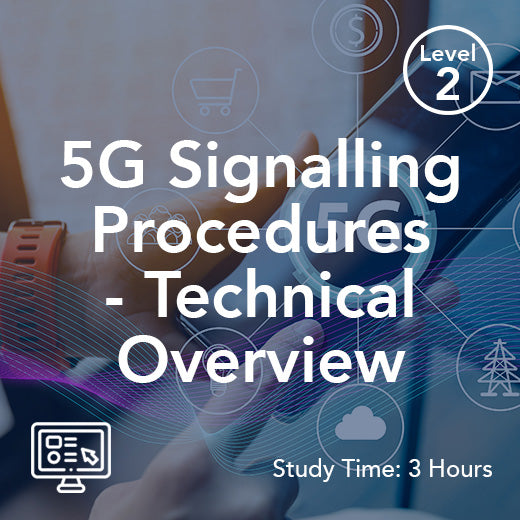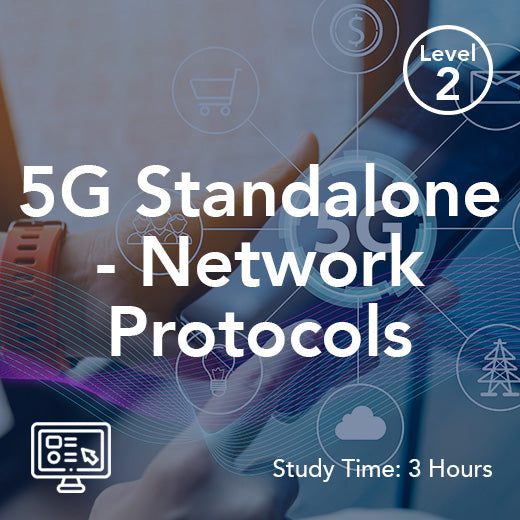Comprendere il divario tra pacchetti: spunti chiave per gli appassionati di tecnologia
- , di Stephanie Burrell
- 9 tempo di lettura minimo
Nel frenetico mondo della tecnologia, comprendere i dettagli più sottili della comunicazione di rete può fare la differenza. Uno di questi dettagli è l'interpacket gap, un elemento cruciale che spesso passa inosservato all'osservatore superficiale. Questo gap svolge un ruolo fondamentale nel garantire che i pacchetti di dati vengano trasmessi in modo efficiente e senza congestione. Padroneggiando il concetto di interpacket gap, gli appassionati di tecnologia possono ottimizzare le prestazioni di rete e risolvere i problemi di connettività con maggiore precisione. Unisciti a noi per approfondire le complessità di questo aspetto spesso trascurato del networking, fornendoti gli spunti necessari per migliorare le tue competenze tecniche.
Introduzione al gap inter-pacchetto
Comprendere il gap tra pacchetti è essenziale per chiunque sia interessato alle comunicazioni di rete. Questa sezione introduce il concetto, spiegandone il ruolo fondamentale nel garantire un trasferimento dati fluido tra le reti.
Che cosa è l'inter-packet gap?
L'intervallo interframe si riferisce alla breve pausa tra la trasmissione di pacchetti di dati su una rete. Questo intervallo consente ai dispositivi di rete di prepararsi per il pacchetto successivo, garantendo un flusso di informazioni senza interruzioni. L'intervallo è in genere misurato in nanosecondi e funge da buffer per prevenire collisioni e ridurre la congestione.
L'IPG minimo è fondamentale per mantenere l'efficienza e l'affidabilità della trasmissione dati. Senza questa pausa deliberata, le reti potrebbero essere sovraccaricate, con conseguente perdita di dati o ritardi. Con la crescente complessità delle reti, comprendere i meccanismi del gap tra pacchetti diventa sempre più importante per ottimizzare le prestazioni.
In sostanza, il gap tra pacchetti agisce come un segnale stradale su una strada trafficata, controllando il flusso di dati per evitare colli di bottiglia e garantendo un avanzamento regolare e ordinato attraverso la rete.
Importanza nelle prestazioni della rete
Il gap tra pacchetti gioca un ruolo cruciale nelle prestazioni di rete , garantendo che i pacchetti di dati vengano trasmessi in modo efficiente e senza collisioni, secondo il protocollo. Questo gap consente ai dispositivi di sincronizzarsi, garantendo che ogni pacchetto venga inviato e ricevuto nell'ordine corretto.
Offrendo ai dispositivi il tempo necessario per elaborare i pacchetti, il valore del gap tra pacchetti riduce la probabilità di errori e perdita di dati. Agisce come un buffer, consentendo gli aggiustamenti di rete e prevenendo la congestione. Questo è particolarmente importante nelle reti ad alta velocità, dove i pacchetti di dati vengono inviati in rapida successione.
Tuttavia, il problema sorge quando il gap tra pacchetti migliora l'affidabilità complessiva della rete. Gestire efficacemente il flusso di dati aiuta a mantenere una connettività costante e a prevenire interruzioni. Questo è fondamentale per le applicazioni che richiedono la trasmissione di dati in tempo reale, come le videoconferenze e i giochi online, dove i ritardi possono avere un impatto significativo sull'esperienza utente.
Aspetti tecnici del gap tra pacchetti
In questa sezione approfondiamo il funzionamento tecnico dell'inter-packet gap. Esploreremo il suo funzionamento all'interno dell'infrastruttura di rete e i fattori che ne influenzano l'efficacia.
Come funziona il gap tra pacchetti
L'intervallo tra pacchetti funziona introducendo una breve pausa tra i pacchetti di dati. Questo processo prevede diversi passaggi:
Trasmissione di pacchetti : un pacchetto di dati viene inviato dal dispositivo sorgente.
Implementazione Gap : dopo l'invio del pacchetto, si verifica una piccola pausa prima che venga trasmesso il pacchetto successivo.
Prontezza del dispositivo : il dispositivo ricevente utilizza questa pausa per prepararsi al pacchetto in arrivo, assicurandosi di essere pronto a elaborare i dati in modo efficiente.
Pacchetto successivo : il pacchetto successivo viene inviato seguendo lo stesso processo.
Questo metodo garantisce che i dispositivi possano gestire il flusso continuo di dati senza essere sovraccaricati. La durata del gap può variare in base alle condizioni della rete e alle specifiche delle apparecchiature, ma generalmente rimane entro un intervallo standard per garantire la coerenza.
Il gap tra pacchetti agisce quindi come un meccanismo regolatore, bilanciando la velocità di trasferimento dei dati con la capacità della rete di elaborarli in modo efficiente.
Fattori che influenzano il gap tra pacchetti
Diversi fattori influenzano l'efficacia del gap tra pacchetti, influenzando le prestazioni della rete:
Velocità di rete : velocità più elevate potrebbero richiedere intervalli più brevi per mantenere l'efficienza.
Compatibilità dei dispositivi : dispositivi diversi potrebbero gestire le lacune in modo diverso, influenzando le prestazioni complessive.
Volume di traffico : livelli di traffico elevati possono richiedere adattamenti dello spazio per evitare congestioni.
Condizioni ambientali : fattori esterni, come le interferenze, possono alterare la temporizzazione degli intervalli.
Questi fattori devono essere considerati nella configurazione delle reti per garantire prestazioni ottimali. Regolare l'intervallo tra pacchetti in base a queste variabili può migliorare significativamente l'efficienza e l'affidabilità della rete.
La comprensione di questi elementi consente ai professionisti della rete di ottimizzare i propri sistemi, assicurandosi che siano in grado di gestire condizioni variabili, mantenendo al contempo un flusso di dati regolare.
Impatti sull'efficienza della rete
In questo articolo, esamineremo come il gap tra pacchetti influenzi l'efficienza della rete. Considereremo i suoi effetti sulla trasmissione dei dati e le sfide legate alla gestione di questo componente critico.
Effetti sulla trasmissione dei dati
Il gap tra pacchetti ha un impatto diretto sull'efficienza della trasmissione dati . Consentendo ai dispositivi di elaborare i pacchetti senza interruzioni, riduce la probabilità di errori e minimizza la perdita di dati.
Questo divario facilita anche una comunicazione più fluida tra i dispositivi, garantendo connessioni più affidabili. Nelle reti ad alta velocità, dove i dati vengono inviati rapidamente, il divario garantisce che i dispositivi non si sovraccarichino, mantenendo inalterata la qualità del servizio.
Inoltre, il gap tra pacchetti aiuta a gestire la latenza, un fattore cruciale nelle comunicazioni in tempo reale. Regolando il flusso di pacchetti, previene i ritardi, garantendo la consegna tempestiva dei dati. Questo è essenziale per le applicazioni in cui la tempistica è fondamentale, come i servizi di streaming e i giochi online.
In sintesi, il divario tra pacchetti aumenta la velocità, l'affidabilità e la qualità della trasmissione dei dati, rendendolo un aspetto essenziale per l'efficienza delle operazioni di rete.
Sfide nella gestione del divario tra pacchetti
La gestione del divario tra pacchetti presenta diverse sfide:
Variabilità della rete : le diverse condizioni della rete richiedono continui aggiustamenti del gap.
Problemi di compatibilità : garantire che tutti i dispositivi in una rete possano gestire le stesse impostazioni di gap può essere complesso.
Scalabilità : con l'espansione delle reti, diventa sempre più difficile mantenere una gestione coerente dei gap.
Nonostante queste sfide, una gestione efficace del gap tra pacchetti è fondamentale per il mantenimento delle prestazioni della rete. Affrontare queste problematiche richiede una comprensione delle dinamiche di rete e la capacità di adattarsi alle mutevoli condizioni.
Riconoscendo e superando queste sfide, i professionisti della rete possono garantire che i loro sistemi funzionino senza problemi, mantenendo efficienza e affidabilità anche quando le richieste evolvono.
Applicazioni nel mondo reale
Questa sezione esplora le applicazioni pratiche dei gap tra pacchetti nelle reti odierne. Analizziamo come vengono utilizzati in contesti moderni e proponiamo soluzioni per ottimizzarne le prestazioni.
Casi d'uso nelle reti moderne
Nelle reti moderne, il gap tra pacchetti viene applicato in vari scenari per migliorare le prestazioni:
Data Center : garantiscono un flusso di dati efficiente tra i server, riducendo la latenza e migliorando la velocità di elaborazione.
Telecomunicazioni : mantiene una comunicazione fluida prevenendo le collisioni dei pacchetti in ambienti ad alto traffico.
Servizi di streaming : migliorano l'esperienza utente riducendo al minimo il buffering e garantendo una distribuzione fluida dei dati.
Dispositivi IoT : supportano una connettività costante, consentendo una trasmissione dati affidabile anche con numerosi dispositivi connessi.
Questi casi d'uso dimostrano la versatilità del gap inter-pacchetto nel soddisfare diverse esigenze di rete, come indicato nella tabella. Implementando impostazioni di gap appropriate, le organizzazioni possono ottimizzare la propria infrastruttura di rete, garantendo che soddisfi i requisiti della tecnologia moderna.
Soluzioni per ottimizzare il gap tra pacchetti
L'ottimizzazione del gap tra pacchetti prevede diverse strategie:
Regola impostazioni : personalizza le impostazioni di gap in base alle specifiche condizioni di rete e alle capacità del dispositivo.
Monitoraggio del traffico : utilizza l'analisi per monitorare le prestazioni della rete e regolare il divario secondo necessità.
Implementare l'automazione : utilizzare strumenti automatizzati per gestire dinamicamente le impostazioni dei gap, adattandosi ai cambiamenti in tempo reale.
Queste soluzioni consentono alle organizzazioni di mantenere prestazioni di rete ottimali, garantendo una trasmissione dati efficiente e riducendo il rischio di congestione. Sfruttando queste strategie, i professionisti della rete possono migliorare l'efficacia del gap tra pacchetti, supportando una comunicazione fluida tra diverse applicazioni.
Futuro del divario tra pacchetti
Guardando al futuro, questa sezione esplora il futuro dei gap tra pacchetti. Consideriamo le tecnologie emergenti e le innovazioni nella gestione delle reti che potrebbero ridefinire il modo in cui questi gap vengono sfruttati.
Tecnologie e tendenze emergenti
Le tecnologie emergenti sono destinate a influenzare il ruolo del divario tra pacchetti nelle reti:
Reti 5G : con la diffusione del 5G, il divario tra pacchetti dovrà adattarsi a velocità di trasmissione dati più elevate e requisiti di latenza più bassi.
Integrazione dell'intelligenza artificiale : l'intelligenza artificiale potrebbe automatizzare la gestione dei gap, ottimizzando le impostazioni in base alle diverse condizioni.
Edge Computing : l'elaborazione decentralizzata dei dati richiederà nuovi approcci alla gestione del flusso di dati, con un impatto sulle strategie di gap.
Queste tendenze indicano un passaggio verso tecniche di gestione della rete più sofisticate, in cui il gap tra pacchetti gioca un ruolo chiave. Con l'evoluzione della tecnologia, la capacità di adattare dinamicamente le impostazioni del gap diventerà sempre più importante per mantenere efficienti le operazioni di rete.
Innovazioni nella gestione della rete
È probabile che le innovazioni nella gestione della rete migliorino il modo in cui vengono gestiti i gap tra pacchetti:
Sistemi intelligenti : algoritmi avanzati possono analizzare il traffico di rete e regolare automaticamente le impostazioni degli spazi vuoti.
Soluzioni basate su cloud : la gestione centralizzata consente aggiornamenti e regolazioni senza interruzioni su tutte le reti.
Strumenti collaborativi : le piattaforme che consentono la comunicazione tra dispositivi semplificheranno i processi di gestione delle lacune.
Queste innovazioni offrono il potenziale per rivoluzionare la gestione delle reti, migliorandone l'efficienza e l'adattabilità. Adottando questi progressi, le organizzazioni possono garantire che le proprie reti rimangano robuste e reattive alle esigenze future.
UN

































